3 Simple Steps to Eat LOTS of Carbs
and NEVER Store Them as Fat...
By Shaun Hadsall
 Did
you know that if you intentionally avoid your favorite carbs all the
time because you think they’re unhealthy or you believe they’re the root
cause of your belly fat, it can be disastrous for your hormone levels
and wreak havoc on your metabolism?
Did
you know that if you intentionally avoid your favorite carbs all the
time because you think they’re unhealthy or you believe they’re the root
cause of your belly fat, it can be disastrous for your hormone levels
and wreak havoc on your metabolism?
Did you know that if you’ve EVER dieted or used a low carb diet, your fat burning hormones automatically plummet, slow down your metabolism and can STOP your body from burning fat in LESS than a week?
Did you know that there are 3 steps you can use to STOP all this from happening and STILL enjoy all your favorite carbs WITHOUT getting fat?
In fact, once you discover these 3 simple steps, you can use carbs to speed up calorie burning, STOP your metabolism from slowing down, and keep your body’s #1 fat burning hormones at healthy levels day in and day out.
All you have to do is follow the 3 simple rules below to ensure that EVERY time you eat your favorite carbohydrates they’re NEVER stored as fat on your body.
This isn’t another hyped up gimmick or diet quick-fix. It doesn’t require any costly supplements. And it works for everyone. Regardless of your age, your gender, or your current condition you can watch your belly get significantly FLATTER in as little as 14 days using this approach.
My name is Shaun Hadsall, and my 15+ years of experience in the diet and nutrition industry have allowed me to acquire a proprietary nutrition secret that will keep your body looking young, help you CONTROL your fat-burning hormones, and legitimately make stubborn belly-fat your body’s DAILY “go-to” energy source.
I’ve used and taught this system to thousands of men and women of all ages from all over the globe, and all you have to do is apply these 3 simple steps right now, and you’ll NEVER store carbs as fat on your body again.
But I do have to warn you. What you’re about ready to read will probably be the exact opposite of what your local dietician, family doctor, or personal trainer will recommend.
That’s because the weight loss industry has fooled everybody into thinking carbs are the enemy and they’ll make you fat if you don’t stop eating them. Low carb, fad diets may work initially but for 95% of the population it’s just a temporary short cut and you’ll gain the weight back TWICE as fast as you lost it.
These 3 steps reveal what you absolutely MUST STOP doing...
and it will only take you 14 short days to wake up your dying fat loss
hormones, "spark" your dead metabolism, and quickly burn off belly fat –
WITHOUT Avoiding Carbs.
Below, you’ll find all 3 steps, and you’ll also discover how easy
it can be to fix your broken metabolism and FORCE lower belly-fat to be
your body’s “go to” energy source on a daily, ongoing basis…Step 1: STOP Using Low-Carb Diets
 Low
carb diets, low carb foods, low carb diet shakes, low carb everything.
It’s been around for years now. Unfortunately, it’s not working. In
fact, well over 90% of people who start a low carb or trendy diet gain all or more of their weight back within a year of losing it. Even worse, epidemics like obesity and diabetes are at all time highs.
Low
carb diets, low carb foods, low carb diet shakes, low carb everything.
It’s been around for years now. Unfortunately, it’s not working. In
fact, well over 90% of people who start a low carb or trendy diet gain all or more of their weight back within a year of losing it. Even worse, epidemics like obesity and diabetes are at all time highs. This is why you shouldn’t be afraid of carbs – your body NEEDS them. Carbs stop muscle loss, speed up recovery, provide energy to your brain and body, elevate your metabolic rate, and stimulate your body’s most important fat-burning hormones. Yes, believe it or not, things like insulin aren’t always evil! Your body needs carbs to keep your metabolism healthy, happy, and burning fat.
People who go on chronic low carb diets radically alter their hormones and damage their metabolisms, so their bodies simply won’t burn fat. In fact, it only takes as little as one week of cutting carbs to start losing muscle, slowing down your metabolism and destroying your fat-burning hormones.
Besides, do you really want to constantly obsess over calories, count carbs all the time and deprive yourself of your favorite foods? Of course you don’t…you’ll be miserable.
But there is a “smart” approach you can take to ensure you get all these benefits of carbs WITHOUT fat-storage. It can even help you heal any previous damage you may have done from crash dieting. You’ll see exactly how this method works on the next page.

Step 2: STOP Carb-Based Fat "Spill-Over"
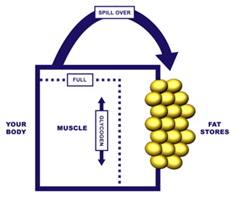 There
are three simple stages of carbohydrate storage. If you understand how
they work, you can eat your favorite carbs and NEVER have to worry about
storing them as fat on the body.
There
are three simple stages of carbohydrate storage. If you understand how
they work, you can eat your favorite carbs and NEVER have to worry about
storing them as fat on the body.
But if you don’t, you’ll consistently suffer from carb-based fat “spillover” and continue to accumulate more belly fat and even develop ugly pockets cellulite.
Stage 1: Immediate Energy Needs: As soon as a carb hits your mouth, digestion begins and they are quickly made available for energy needs or stored for later use.
Stage 2: Storage in your Muscles & Liver: Your body then stores carbohydrates as glycogen in the muscle and the liver as a source of energy for movement and daily function. Storage continues until the muscle and/or liver is full.
Stage 3: Spillover / Fat Storage: After just a few short days, when energy intake is abundant and little or no energy is expended, muscle and liver stores over fill and the body starts storing the unused carbohydrates as fat.
In other words, if you’re not consistently utilizing more carbohydrates than you’re taking in, your muscles and liver will “fill up” with glycogen. When this happens, every time you consume carbs (unless you’re burning them off with strategic exercise) they start to “spillover” and automatically be stored as fat.
However, there is a super simple protocol you can use to STOP carb-based fat-spillover and STILL eat all the carbs you want. We’ll share more on the next page.

Step 3: STOP Eating Carbs at the WRONG Times
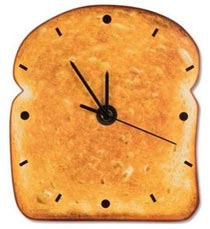 Carb timing confusion is one of the primary reasons that 95% of the population gains their weight back after losing it.
Carb timing confusion is one of the primary reasons that 95% of the population gains their weight back after losing it.
But when you consume lots of your favorite carbs at the right times (and even cheat foods at specific times), you’ll NEVER have to worry about them getting stored on the body as fat.
Here are 3 simple ways you time your carb intake to LIMIT stage 3 fat-spillover and KEEP your body burning fat.
GOOD: A good time of day to eat your favorite
carbohydrates is first thing in the a.m. when your metabolic rate is
higher and insulin sensitivity is peaking “naturally”. This means
there’s more room in your energy tank to let the carbs in without any fat storage.BETTER: An even better time to consume impact carbs is 3 to 4 hours before you exercise.
This will ensure the carbs you consume are burned off during and after the workout to avoid fat-spillover and prevent muscle loss. It will also provide you with increased energy levels throughout your workout. Better performance equals more fat and calories burned during and after the workout.
BEST: The best time to consume your favorite carbs is post-workout. When you use the RIGHT TYPE of exercise, your muscles act like a sponge that’s been rung dry, so your body will literally “soak up” all your favorite carbs.
Timing your carb intake the right way is one the easiest ways to eat all your favorite foods while skyrocketing your fat-burning hormones and rebooting your dead metabolism.
This is how you can ALL the fat-burning benefits of carbs listed above and STOP fat-storage from your carb intake.
Simply put, if you eat carbs with the wrong foods - at the wrong times, you’ll STORE fat. If you eat carbs with the right foods at the right times, you’ll BURN fat.
All three of the steps above are part of a unique and proprietary nutrition method we’ve coined, Macro-Patterning™, which gives you the flexibility to eat the foods that you love while strategically using carbs, and all your favorite cheat foods, as a way to rapidly speed up your metabolic rate, preserve lean muscle tissue, and burn an INSANE amount of fat – all at the same time.
But unfortunately, those who don’t have access to this information will continue to consume carbs the wrong way, wreak havoc on their metabolisms, suppress their fat-burning hormones, and prevent stubborn belly fat from being their primary energy source.
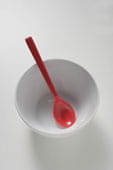
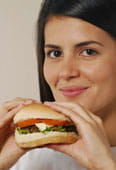 Trick #2 to Eat Less
Trick #2 to Eat Less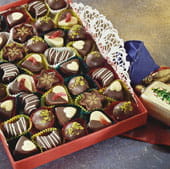 Trick #3 to Eat Less
Trick #3 to Eat Less Trick #5 to Eat Less
Trick #5 to Eat Less 












 In
several other articles, I've told you about some of the really cool
experiments that Tim Ferriss has done in his new book that I read
recently,
In
several other articles, I've told you about some of the really cool
experiments that Tim Ferriss has done in his new book that I read
recently, 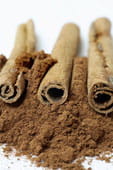 The pre-meal cinnamon
The pre-meal cinnamon